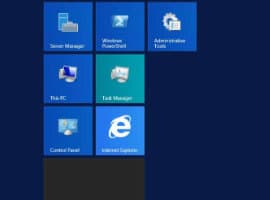Build and Ignite, the two largest Microsoft technology conferences, have come and gone, leaving us with a lot of new announcements and tons of content to go through. Keeping up with all the new stuff is extremely hard with so much happening.
One of the topics I was really expecting to learn more about was SharePoint 2016 but, although it came up here and there, it got a surprisingly small coverage. Maybe it’s not so surprising, given it’s still a year away, but, nevertheless, I was hoping for more. Most of the information I gathered was presented by Bill Baer on his two sessions about SharePoint 2016.
Key takeaways
Microsoft is still betting strong in the cloud and Office 365, but they’ve been listening and have understood that many companies are still not ready or not willing to move to the cloud. SharePoint 2016 has been designed to bridge the on-premises world and the cloud, by making it a lot easier to deploy hybrid scenarios. Other investment areas include improved user experiences, compliance and security. It will certainly be an evolution from SharePoint 2013 but don’t expect anything dramatically different.
Regarding the release timeline, there are 3 milestones:
•Q4 2015 – Public Beta (Beta 1)
•Q1 2016 – Release Candidate
•Q2 2016 – Final Version (RTM)
Hardware and Software Requirements
The hardware requirements for SharePoint 2016 are mostly the same as for SharePoint 2013:
•RAM: 16-24 GB (for a single server farm) or 12-16 GB (for a multi-server farm)
•CPU: 1 quad-core
•HDD: 80 GB
As for software requirements, there are a few changes:
•Windows Server 2012 R2 or Windows Server 10
•SQL Server 2014 or SQL Server vNext
•.NET Framework 4.5.2 (on Windows Server 2012 R2) or .NET Framework 4.5.6 (on Windows Server 10)
Deployment
Regarding deployment, you can still deploy it on a Domain Controller as long as it’s a development environment, but stand alone mode, using SQL Server Express, is no longer supported. Like SharePoint 2013, you cannot deploy SharePoint 2016 on a client OS or Windows Web Server and dynamic memory is not supported.
Up until now, every SharePoint server was born equal, meaning the install process was the same for every server. The application role of each server was defined later, when you chose which services are started on the machine and which service applications are configured in the farm. For SharePoint 2016, Microsoft identified 4 common roles (called MinRoles) used in most multi-server farms and allows you to select one of them when installing a server:
•Web Front End – Services end user requests. Servers assigned to this role are optimized for low latency.
•Application – Services backend jobs or the requests triggered by backend jobs. Servers assigned to this role are optimized for high throughput.
•Distributed Cache – Serves distributed cache for the farm. Servers assigned to this role can load balance end user requests among the web front ends.
•Search – A specialized version of the application server, dedicated to the search
There is a fifth role – Specialized Load – for situations that don’t fit any of the above pre-defined roles, allowing you to select any services to run on the server.
The SharePoint Health Analyzer will scan each server daily to check if the service instances running on the server are compliant with the selected role for that server. All roles are scanned, except for Specialized Load.
Upgrade & Migration
Upgrading to SharePoint 2016 will only be supported from SharePoint 2013. If you’re still using SharePoint 2010 or a previous version, you’ll first have to upgrade to SharePoint 2013 and your site collection will have to be converted to 15 mode before you can upgrade to SharePoint 2016. The upgrade is done via the database attach process, so nothing new here. You can also choose to migrate content from a previous version of SharePoint using one of the available third party software applications.
Patching
Patches and updates will have a smaller footprint and will not require any downtime. As with most of the new features, the new patching process was developed for SharePoint Online and SharePoint 2016 will now benefit from the lessons learned from managing SharePoint in the cloud. Just for reference purposes, in SharePoint 2013 an update is comprised of 37 packages and an additional 18 packages for each installed language pack. In SharePoint 2016, an update is comprised of just 4 packages, plus 1 extra package for each installed language pack.
Boundaries and Limits
With each new version of SharePoint, Microsoft stretches the boundaries and limits of the platform. For SharePoint 2016, here are the main improvements:
•Supports content databases with TBs (specific number is not yet defined). For SharePoint 2013, general purpose content databases should not be more than 200GB in size.
•Supports 100,000 site collections per content database (SharePoint 2013 supports 10,000 site collections per content database)
•List item threshold will be over 5,000 items
•Max file size is now 10GB and there won’t be character restrictions (SharePoint 2013 support files up to 2GB)
•Search index can scale to 500 million items (SharePoint 2013’s search index can hold up to 250 million items)
Performance and Reliability Enhancements
•Server role optimizations
•Zero downtime patching strategy
•Improved distributed cache reliability
•Traffic management with intelligent routing and server health checks
Performance was also improved across the board. Two good examples of such improvements are the new file handling protocol and the new site collection creation process. Regarding file handling, here is a brief history of the enhancements introduced by each SharePoint version:
•SharePoint 2010 introduced the Cobalt protocol. With Cobalt, when a document is being edited and the user saves it, only the modified portion of the file is sent by the client application to the server, greatly reducing the amount of data transmitted between client and server. However, the server still has to fetch the whole document from the database and merge the existing content with the user changes before saving the whole document back to the content database.
•SharePoint 2013 brought the Shredded Storage mechanism which allows documents to be stored in small pieces in the content database. Because documents are already “shredded” in the database, the server does not have to fetch the whole document to merge the original contents with the changes, which reduces the server processing overhead.
•SharePoint 2016 adds BITS (Background Intelligent Transfer Service) protocol which will improve upload and download speeds and resiliency.
The new site collection creation process (named Fast Site Creation) leverages the SPSite.Copy method to clone a pre-configured site collection template at the content database level. This process avoids the overhead of feature activation since the features are already activated in the source site collection.
UI Improvements
SharePoint 2016 looks and feels mostly like the current version of SharePoint Online (in Office 365), but a few improvements were made to the UI, namely:
•New Authoring Canvas, a new and modern way to create content for a web page using a Sway-like user experience.
•Support for Durable Links which allows documents to be moved while keeping the URL intact, because it is based on a resource ID.
Cloud Accelerated Experiences
One of the most touted new features of SharePoint 2016 is the support for cloud accelerated experiences or, in other words, the ability to surface features that are only available in the cloud, using a hybrid scenario:
•Compliance and data loss prevention (DLP) across cloud and on-premises
•Cloud search service application which unifies the on-premises and cloud search indexes and provides support for Office Graph / Delve experiences on-premises
•Distributed team sites across SharePoint 2016 and Office 365
•Hybrid deployment automation with UI-based configuration
Other Announcements
•There will not be a SharePoint Designer 2016
•Office Graph / Office Delve will be made available (through a cloud accelerated experience) on SharePoint 2013 via an update later this year
Conclusions
SharePoint 2016 is still a year away which means some features might suffer some changes and new features will likely be announced between now and then. However, it is clear that this release is intended to be a stepping stone in the path to the cloud, given that most new features are already available on SharePoint Online or will be soon enough. Hybrid scenarios are easier than ever to deploy and some of the most compelling new use cases will require this approach, which reinforces that idea. There is still a lot to learn about the new SharePoint, and I’ll be posting my findings along the way. This article was first published here>>
About the Author:

André Vala is a SharePoint Solutions Architect at |create|it|, a Microsoft Partner company which specializes in Systems Integration, Business Productivity and Cloud Solutions, using Microsoft technologies such as BizTalk, SharePoint and Azure. André is a MCTS and MCSD for Microsoft SharePoint Server, having worked with SharePoint for the last 9 years on projects that range from Corporate Intranets and Extranets to large Internet Portals. André has been an invited speaker in several Microsoft events such as TechDays and DevDays in Lisbon, Road To SharePoint 2010, and community events such as Portuguese SharePoint User Group meetings. He was also a speaker at the European SharePoint Conference in 2011, a member of the Programme Team for European SharePoint Conference 2014 and is one of the founding members of the Portuguese SharePoint User Group (SPUG PT). André has published a few technical articles focused on SharePoint for the Portuguese magazines “Programar” and “PC Guia” and is the author of the bloghttp://blogit.create.pt/andrevala.
Check out the 2016 European SharePoint Conference video:












